Mysterious Origins of Golden Gate City, the Missing People of Phoenix &Other Fantastic Tales
Chapter Two: Mysterious Origins of Golden Gate City, the Missing People of Phoenix &Other Fantastical Tales
Once again, I am simply presenting information here and a few random observations. Feel free to use it or ignore it as you see fit. Do your own research and draw your own conclusions.
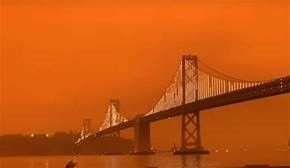
Item 3: San Francisco
San Francisco basically looks like the apocalypse right now (September 10, 2020)
Here’s a groovy tune from Chris Isaak to get us on the right track:
Here’s a bit on the Golden Gate, pre-bridge:
Jack London on San Francisco
The Strange Mainstream Literature of the late 1800 to early 1900s
Call of the Wild (1903), Jack London : Explores animal theft, animal cruelty and a creature returning to its feral evolutionary roots.
The Iron Heel (1908), Jack London: A dystopian oligarchy takes over America.
1984 (1949), George Orwell: The iconic totalitarian nightmare.
Animal Farm (1945), George Orwell.
Alice's Adventures in Wonderland (1890), Lewis Carroll (Rev Charles Dodgson)
Mary Shelley’s Frankenstein (1818)
Bran Stroker’s Dracula (1897)
Strange Case of Dr. Jekyl and Mr Hyde (1886) R.L. Stevenson
The Picture of Dorian Gray (1890) Oscar Wilde: A hedonistic and oft-obscene tale of a narcissistic bon vivant and the strangely aging portrait that captures his every worldly sin.
The Scarlet Letter (1850), Nathanial Hawthorne: Explores guilt, sin and evil inherent in human nature.
Moby Dick (1851), Herman Melville: Perhaps the most archetypal tale of evil ever.
Uncle Tom’s Cabin (1852), Harriet Beecher Stowe: Exploring slave sufferings and painful family separations.
Little Women, (1868), Louisa May Alcott.
The Match Boy (1869), Horatio Alger, Jr: One of the first in the endless ubiquitous line of American rags to riches fables
Adventures of Tom Sawyer (1876)/Adventures of Huckleberry Finn (1884), Mark Twain. Huck, Tom and Jim encounter adventure, hypocrisy, racism and violence along the great Mississippi.
Miles Mathis debunks the Mark Twain myth:
The Monk (1796), Matthew Lewis. Evil within the Catholic church. We didn’t read this one in school . . .
The Water Babies (1863) Charles Kingsley
American Theatre of the 19th Century
Star actors amassed an immensely loyal following, comparable to modern celebrities or sports stars. At the same time, audiences had always treated theaters as places to make their feelings known, not just towards the actors, but towards their fellow theatergoers of different classes or political persuasions, and theatre riots were a regular occurrence in New York.[18] An example of the power of these stars is the Astor Place Riot in 1849, which was caused by a conflict between the American star Edwin Forrest and the English actor William Charles Macready. The riot pitted immigrants and nativists against each other, leaving at least 25 dead and more than 120 injured.
In the pre-Civil War era, there were also many types of more political drama staged across the United States. As America pushed west in the 1830s and 40s, theatres began to stage plays that romanticized and masked treatment of Native Americans like Pocahontas, The Pawnee Chief, De Soto and Metamora or the Last of the Wampanoags. Some fifty of these plays were produced between 1825 and 1860, including burlesque performances of the "noble savage" by John Brougham.[19] Reacting off of current events, many playwrights wrote short comedies that dealt with the major issues of the day. For example, Removing the Deposits was a farce produced in 1835 at the Bowery in reaction to Andrew Jackson's battle with the banks and Whigs and Democrats, or Love of No Politics was a play that dealt with the struggle between America's two political parties.
In 1852, Harriet Beecher Stowe published the anti-slavery novel Uncle Tom's Cabin and, without any strong copyright laws, was immediately dramatized on stages across the country. At the National Theatre in New York, it was a huge success and ran for over two hundred performances up to twelve times per week until 1854.
In 1848 the great California Gold Rush was on, or so another staple American legend supposes. The population of San Francisco in 1848 was approximately 1,000 people. About a year later the population had boomed to an unbelievable 25,000 plus. Amazing.
Commencing Christmas Eve, 1849, continuing into 1850, a series of catastrophic fires supposedly destroyed the great city of San Francisco. According to the historical record, the city was burned to the ground no less than 6, (count ‘em, 6!) times in less than a year.
Here’s a highly informative video from Jon Levi that inspired this inquiry.
In this video, Inheritors of a Nation, we will explore the history of San Francisco and the look into the main stream narrative for clues that the gold rush of 1849 may have been an inheritance (as opposed to mining for gold in the traditional way we were told). The inheritors of a nation may simply be the next wave of civilizations after a major reset or catastrophe. It appears the last reset may have been around 1812 but may also be ongoing as we see evidence of this as late as 1906 in the great San Francisco earthquake and fire. (Jon Levi.)
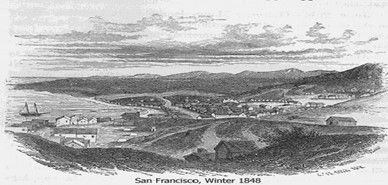
Fact and Fiction: A “First Hand” Description of San Francisco in April 1848
That was an amazingly quick build up, considering late 1800s technology.
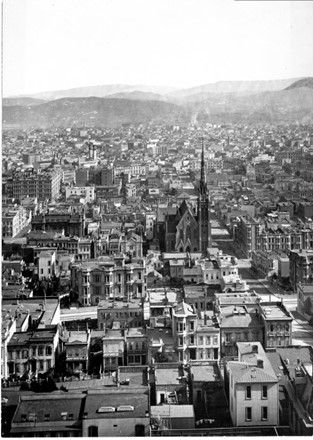
Taken in 1878 as claimed? Where are all the people?
In 1906 the city would once again be demolished by the historic devastation of the dreaded earthquake-fire combination. Yet, just like Chicago would do a few decades later, the recently fire-ravaged Golden Gate City would enjoy a remarkable recovery, diligently rebuilding to an unbelievable degree. By 1915 San Francisco was hosting the huge Panama Pacific International Exhibition. Much like the Columbian Exposition in Chicago a few years earlier, supposedly these magnificent architectural and engineering marvels were constructed of temporary materials. Staff? (Was this fantastic spectacle likewise eradicated by a raging inferno?)
Once again, here is researcher Michelle Gibson’s comprehensive video on the subject.
Amazing. Look at those photos. Can anyone say, Give me Christ or give me Hiroshima . . . (Thank you, Leonard Cohen.) Or Kohen: Of the highest priestly order.
“The Future”
Perhaps we will dissect this song in the future . . .

Here’s what Wikipedia has to report on the great San Francisco Exhibition:
Construction[edit]
Constructed from temporary materials (primarily staff, a combination of plaster and burlap fiber), almost all the fair's various buildings and attractions were pulled down in late 1915. Intended to fall into pieces at the close of the fair (reportedly because the architect believed every great city needed ruins), the only presently-surviving building on the Exposition grounds, Bernard Maybeck's Palace of Fine Arts, remained in place, slowly falling into disrepair.[16] The hall, used to display painting and sculpture during the Fair, was repurposed as a garage for jeeps during World War II.[1] The Palace, including the colonnade with its signature weeping women and rotunda dome, was completely reconstructed in the 1960s and a seismic retrofit was completed in early 2009. The Exploratorium, an interactive science museum, occupied the northern 2/3 of the Palace from 1969 to 2013; the city-owned Palace of Fine Arts Theater, has occupied the southern 1/3 since 1970.
Several other buildings were saved immediately following the Exposition, including the California, Missouri, and Philippine buildings, which were built on government land.[17]
Buildings from the Exposition that still stand today (other than the Palace of Fine Arts) include what is now called the Bill Graham Civic Auditorium at Civic Center Plaza and the Japanese Tea house, which was barged down the Bay to Belmont, California and operated successively as a private residence, speakeasy, and restaurant.[18] In 2020, the present owners of the restaurant retired during the COVID-19 pandemic.[19]
Also surviving are the one-third scale steam locomotives of the Overfair Railroad that operated at the Exposition. They are maintained in working order at the Swanton Pacific Railroad Society located on Cal Poly San Luis Obispo's Swanton Ranch just north of Santa Cruz.[20][21]
The Legion of Honor Museum, in Lincoln Park, was the gift of Alma de Bretteville Spreckels, wife of the sugar magnate and thoroughbred racehorse owner/breeder Adolph B. Spreckels.[22] The building is a full-scale replica of the French Pavilion from the 1915 Panama Pacific International Exposition, which in turn was a three-quarter-scale version of the Palais de la Légion d'Honneur also known as the Hôtel de Salm in Paris by George Applegarth and H. Guillaume. At the close of the exposition, the French government granted Spreckels permission to construct a permanent replica of the French Pavilion, but World War I delayed the groundbreaking until 1921.[23]
The warehouse for the exposition was moved to Fort Hunter Liggett in South Monterey County and the structure, nicknamed the "Tin Barn", has served as the base fire department for the last 30 years. After its move, it initially served as a horse barn, and since then, it has served as a gym, PX and a movie theater for the base.[24][25]
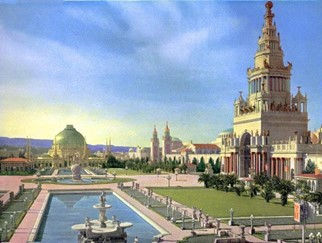
Built of temporary materials?

No fire here. But all these amazing buildings made of temporary materials impressive rebuilt, fortified and still standing today. “Every great city needs a ruins.” Boggles the mind, doesn’t it?
Does anyone see some kind of pattern here? Anyone? . . .
Now back to 1849 . . .
(From The Museum of the City of San Francisco website) Early History of the San Francisco Fire DepartmentThe first fire of any importance occurred in January, 1849, when the Shades Hotel was destroyed. In June following the ship “Philadelphia” was burned as it was preparing to sail for the Sandwich Islands. The inflammable material of which the town was built and winds made many thoughtful people realize that if a fire ever got started nothing could stop it. It was not until December 24, 1849, however, that this fear was realized. The following account of this is found in the “Annals of San Francisco”: “This morning about six o’clock, the awful cry of fire was raised in the city, and in a few hours property than a million dollars was totally destroyed. “The fire began in Dennison’s Exchange, about the middle of the eastern side of the Plaza, and, spreading both ways, consumed nearly all that side of the square, and the whole line of buildings on the south side of Washington street between Montgomery and Kearny streets. “This was the first of the great fires which devastated San Francisco, and it was to be speedily followed by still more extensive and disastrous occurrences of a similar character. Scarcely were the ashes cold when preparations were made to erect new buildings on the old sites, and within a few weeks the place was covered as densely as before with houses of every kind.”
Early History of the San Francisco Fire Department SAN FRANCISCO began its history in a baptism of fires. Hardly had the Gold Rush of ’49 assembled a nondescript collection of wooden houses, tents, the hulks of ships, anything, in fact, to afford protection to the ever-increasing multitudes gathering from the four corners of the earth, but a disastrous fire wiped out the most important part of the new city. Six fires in the first two or three years of her history caused the people to make extraordinary efforts to protect themselves against their recurrence. It was from this determination that the present efficient fire-fighting force sprang. Yet fires continue and will continue, as they did in those early days, and the price of eternal vigilance and preventive methods are the two chief auxiliaries at least of equal importance to force itself. New and better buildings; more precautions taken concerning the use of fire; the widening of streets; the purchase of fire apparatus, and finally the impressment of all citizen to fight a blaze and the organization of fire companies were among the earlier steps taken. Later on cisterns were built at strategical points. But the ever-increasing size of buildings seemed to outstrip efforts made against fires. The larger and higher the buildings went, the greater efficiency demanded in every branch of the fire-fighting service. Today standpipes carry the water to the very top of the highest structures in the city. To say nothing of sprinkler devices and the construction of reinforced concrete buildings supposed to be fireproof. Yet at a recent fire in the Merchants’ Exchange building, on the very site of those earlier fires of seventy-five years ago, it was demonstrated even these are vulnerable. The first fire of any importance occurred in January, 1849, when the Shades Hotel was destroyed. In June following the ship “Philadelphia” was burned as it was preparing to sail for the Sandwich Islands. The inflammable material of which the town was built and winds made many thoughtful people realize that if a fire ever got started nothing could stop it. It was not until December 24, 1849, however, that this fear was realized. The following account of this is found in the “Annals of San Francisco”: “This morning about six o’clock, the awful cry of fire was raised in the city, and in a few hours property than a million dollars was totally destroyed. “The fire began in Dennison’s Exchange, about the middle of the eastern side of the Plaza, and, spreading both ways, consumed nearly all that side of the square, and the whole line of buildings on the south side of Washington street between Montgomery and Kearny streets. “This was the first of the great fires which devastated San Francisco, and it was to be speedily followed by still more extensive and disastrous occurrences of a similar character. Scarcely were the ashes cold when preparations were made to erect new buildings on the old sites, and within a few weeks the place was covered as densely as before with houses of every kind.” As the result of the fire a special meeting of the Town Council was held it which were present Messrs. Steuart, Price, Ellis, Harris, Green, Brannan, Turk, Davis, Simmons and Harrison with John W. Geary presiding, and the following resolutions were adopted: “Whereas, the town severely suffering this morning from the want of necessary organization and means to meet the devastating element of fire; therefore, “Resolved, that the citizens be requested to meet in Portsmouth Square, on Wednesday next at 12 o’clock, to take such measures as may be deemed advisable protect the town against another calamity by organizing fire companies, and that the Town Council will supply the hooks, ladders, axes, ropes, etc., to be kept by said companies.” Other resolutions were passed authorizing the Chief of Police to employ a sufficient number of men to guard the burned district and protect the property of the sufferers; also one authorizing the Alcalde to send to the hospital and afford immediate aid with proper medical service “to those individuals who, in their praiseworthy exertions during the recent fire, have received bodily injury.” In this final clause was the germ of the department’s pension system. Two days later the Town Council appropriated the sum of $800 for the purchase of axes, ropes, hooks, ladders and a wagon to be given over to the keeping of the fire company now organizing by Mr. Edward Otis, styled the “Independent Unpaid Axe Company.” Two months later action was taken for the general organization of a fire department. The following ordinance was passed by the Town Council of February 5, 1850: “Be it ordained, that hereafter it shall be the duty of the Chief Engineer of the Fire Department to superintend the organization of all fire companies in San Francisco; also to examine all engines, hose and apparatus belonging thereto which the city may wish to purchase; to superintend the erection of engine houses and cisterns; to exercise a general supervision and control over all branches of the Fire Department of this city; to act in conjunction with the Fire Committee, on all subjects which may be referred to the them; and to protect the engines and apparatus of the city which shall be placed in the houses of private companies. “It shall be his duty to superintend and direct the operations of all companies at fires or conflagrations; and he shall have authority, with the consent of the Mayor and two members of the Common Council, to blow up any building or buildings with gunpowder which he may deem necessary for the suppression of such fire or conflagration, and furthermore be vested with authority to perform all such needful acts as the emergency of the occasion may require; and to report the situation of his Department at least once in three months or oftener if required. “The salary of the Chief Engineer shall be $6,000 per year, be paid monthly from the city treasury.” It may be of interest to note that this $6,000 a year salary was increased on July 1 of this year to $7,200. Early Fires Terrified Populace The first of the great fires that visited San Francisco occurred at 6 o’clock on the morning of December 24, 1849, when it was estimated that $1,000,000 worth of property was destroyed. Six months later, on May 4, 1850, the second great fire occurred. It began at 4 o’clock in the morning and by 11 o’clock three blocks of the most valuable buildings in the City had been destroyed, with an attendant loss of property estimated to be $4,000,000. It was supposed to have been of incendiary origin. Several persons were arrested, but no formal trial took place. An ordinance was passed immediately after this fire that any person who refused to assist in extinguishing the flames or to assist in removing goods should be fined no less than $5 nor more than $100. Another ordinance provided that every household should keep six water buckets always in readiness for future fires. One month later, on June 14, the third great fire started. It broke out at 8 o’clock in the morning for a defective chimney in a bakery. The wind was blowing and in a few hours the blocks between Clay, California and Kearny streets to the water were one more in flames. Experience had taught the people that although that the cost of fireproof brick structures was much greater than the cost of the old wooden ones, yet in the end they were cheaper and better, The style of architecture began to change for the better. More and more fire companies began to be formed. The fourth great fire broke out about 4 o’clock in morning of September 17, 1850. This time the was estimated to be only $250,000. The blocks burned over were between Dupont, Montgomery, Washington and Pacific streets. But owing to the fact that the district had been burned over in a previous fire, there were only one-story buildings in the main that were destroyed. On October 31 of the same year the City Hospital was destroyed. It was supposed to have been the work of in incendiary. On the evening of December 14, 1850, just a year from the first great fire, the fifth great fire, not considering one or two smaller ones, started. The total damage estimated at $1,000,000. On May 4, 1851, the anniversary of the City’s second great fire, the sixth great fire started. It was estimated that more damage as done at this one than all of the preceding ones. For eight months the citizens had enjoyed comparative immunity. Then at about 11 o’clock of May 3 a fire started in a paint and upholstery store on the south side of the Plaza. This again was considered to have been of incendiary origin. The wind was blowing and at first carried the fire down to Kearny, then along Kearny, for several blocks. Then the wind shifted and blew from the south and carried the fire into the main business district. The wind increased to the ferocity of a hurricane, the planked streets burned. Street after street went up in smoke and the reflection is said to have been seen one hundred miles at sea. The fire burned for the period of ten hours. Between 1500 and 2000 houses had been destroyed. Eighteen blocks in the main business district had been destroyed. Only five of the brick buildings on Montgomery street escaped. The burned district extended about three-fourths of a mile from north to south and a third of a mile from east to west. The damage was estimated at $12,000,000. Municipal Record City and County of San Francisco October 15, 1925
Here’s another interesting video from Howdie Makoski.
(The photographic "evolution" of San Francisco from 1848 (with minors and cowboys) to the famous massive city of the 1878 panorama is beyond any logic. This will be the last of my historical lies videos for a while- I think we as a community have cracked the narrative that history is a lie, on all levels, we don't need to get more details. We can spend our time looking more closely into where we are now and headed. A much longer evaluation of San Francisco and its Fairs can be found in chapter 6 of my book "Exposing the Expositions- Ancient Rome in America."
Here’s a fascinating video from Jon Levi, inspired by Matt McKinley of quantumofconscience.com.
Before San Francisco
In this short video we will very simply examine photos and video before and after the great fire and earthquake of 1906 for clues about the real San Francisco history. The city seems to be magically built, burned and again rebuilt completely in around 62 years. (Jon Levi)
Another version here, posted by Michelle Gibson:
This is a recent video of Stuffed Beagle Productions that replays a video to music that was supposed to have been made in San Francisco, California just days before the 1906 Earthquake and Fire, which I have talked about in a previous video. In it, you see the absolute chaos of the traffic patterns involving horse & buggies, electric streetcars, automobiles, and pedestrians in a street-scene that is heading toward, and culminates in, the San Francisco Ferry Terminal. And check out the architecture on either side of Market Street amidst the chaos. What does this actually represent? Reality? Or what people want us to believe was reality in San Francisco at the turn-of- the-century? Whatever the answer, the footage is bizarre and surreal! Music: Artist: A Perfect Circle Title: Disillusioned Artist: Danny Cudd Title: Omat Odat https://youtu.be/JxAK_i1ughg
Absolute chaos. Watch it again and again.
Maybe you’ll start to believe it. These are the morons, people who rebuilt San Francisco (not once but 6 times?) after a series of catastrophic fires, and would have to build it again, the Day After a devastating earthquake. Really?
It’s almost like a 1906 (comedy) version of Dark City, if in fact that truly is 1906. Perhaps in another dimension.


Amazing advanced architecture materializing in a remarkably short time, revealing very few if any remnants of all that historic earthquake or fire damage. An inherited city inhabited by a mess of reckless clueless interlopers? A miraculous piece of video footage documenting this bustling, chaotic city taken precisely one day before the Great Earthquake of 1906?
“So, what is real and what is fake?”--Jon Levi
Perhaps we should ask the Strangers (Archons?) . . .
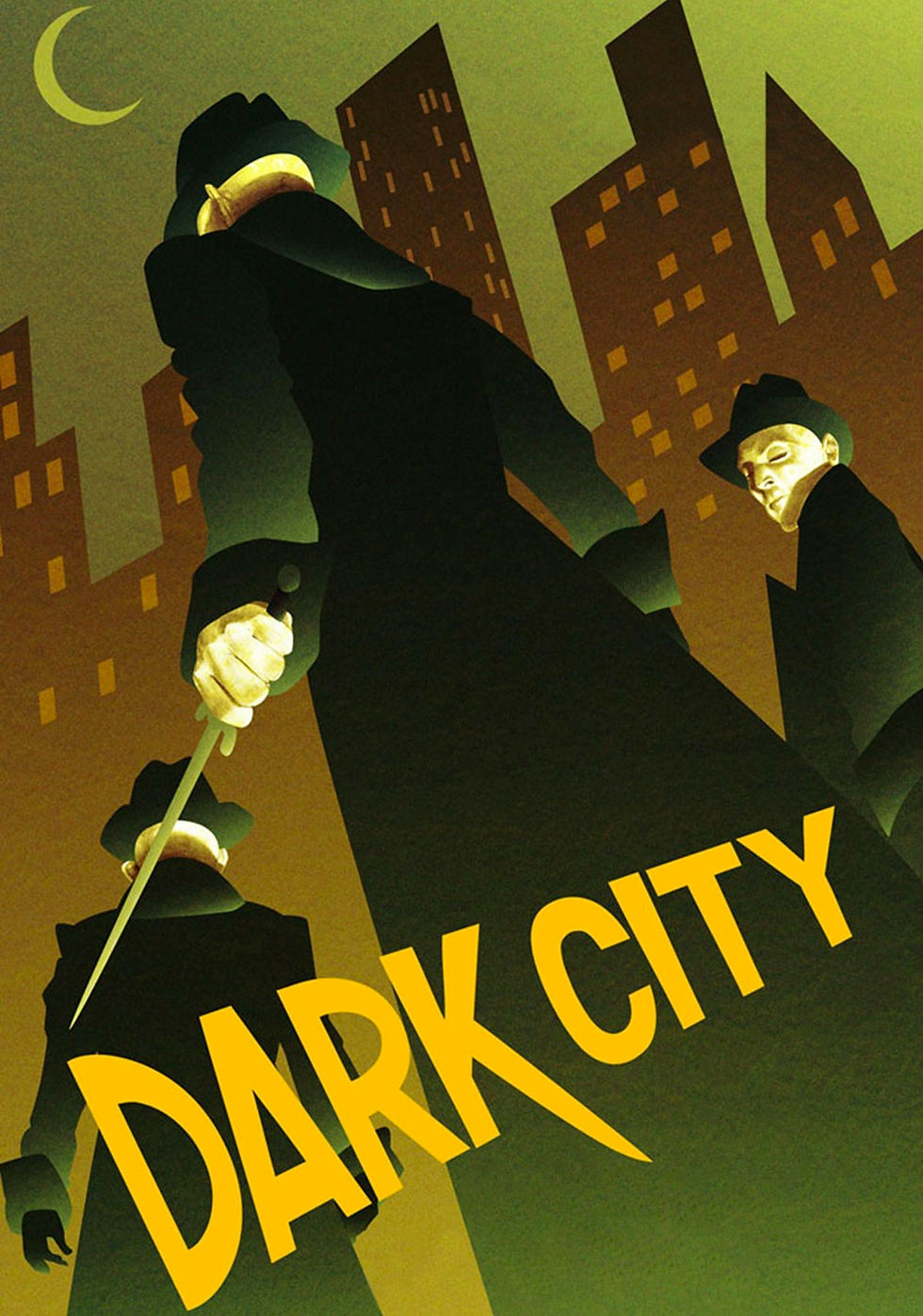
The Construction of the Golden Gate Bridge
And how did they rebuild the city so quickly without the bridge?

The Golden Gate Bridge stands at the entrance to California's San Francisco Bay as a symbol of American ingenuity and resolve, having been constructed during the era of the Great Depression. Today, this beloved international icon and true engineering marvel carries about 40 million vehicles a year and serves not only as a vital transportation link but also as a major travel destination for millions of visitors from around the world.
Read The History of the Building of the Golden Gate Bridge, by Richard Thomas Loomis, dated October 1958.
Here’s an interesting article exploring the occult significance of the Bridge:
Here’s a story about a grisly unsolved crime involving the Bridge:
Another urban legend or so-called true crime?
Item 4: The City of Phoenix: Out of the Ashes

The symbol of the Phoenix:
What happened to the Ho Ho Kam?
Hundreds of years before any of the cities in the eastern part of our country were so much as clearings in the wilderness, a well-established, civilized community occupied the land we know as Phoenix. The Pueblo Grande ruins, which were occupied between 700 A.D. and 1400 A.D., testify to our city's ancient roots.
The wide Salt River ran through the Valley of the Sun, but there was little rain and no melting snow to moisten the brown earth from river to mountain range on either side.
Those former residents were industrious, enterprising and imaginative. They built an irrigation system, consisting mostly of some 135 miles of canals, and the land became fertile. The ultimate fate of this ancient society, however, is a mystery. The accepted belief is that it was destroyed by a prolonged drought. Roving Indians, observing the Pueblo Grande ruins and the vast canal system these people left behind, gave them the name "Ho Ho Kam" -- the people who have gone.
Here’s more on the history of Phoenix:
Native Americans Removed to Make Way for White Settlers The city of Phoenix stands on the site of a prehistoric settlement built by Native Americans, the Hohokam tribe, who had established a thriving culture but who vanished without a trace around 1450 A.D. Thought to be the ancestors of the Pima—"Hohokam" means "those who have gone" in Pima—the Hohokam had constructed a sophisticated system of irrigation canals, many of which are still in use today, that remain as evidence of their existence. Permanent resettlement of the Hohokam site did not come until the late 1860s; in the interim the area shared the history of the rest of the state. Hispanic conquistadors invaded Arizona in the 1500s in search of the Seven Cities of Cibola, bringing with them cattle, horses, and new agricultural methods. They were followed by miners, traders, and farmers whose presence was tolerated by the Native Americans until the 1850s, when it became apparent that the white settlers were encroaching on their land. Battles between the settlers and the tribes brought intervention by the U.S. military and the tribes were eventually confined to reservations.
Here’s more on the Masonic origins of Phoenix:
Most of the first citizens of Phoenix were Freemasons, and the city is overlooked by a white pyramid called Hunt’s Tomb, which offers a panoramic view of the eastern Valley of the Sun. In true masonic style, the tomb was built on an ancient astronomical site, aligned to the cardinal directions, with the entrance facing the rising sun. Its dimensions are the same as the missing capstone of the Great Pyramid, so it evokes the Illuminati symbol we find on the dollar bill right over the words Novus Ordo Seclorum—that’s Latin for NEW WORLD ORDER. Inside the tomb lies George Hunt, or George VII, the first governor of Arizona, who held office for seven successive terms. Hunt was an open member of the Odd Fellows, the Blue Lodge of Masons in Globe and Knights Templar, and a charter member of Globe Lodge P.G. That’s about as Mason as it gets.
The city takes its name from the phoenix, a mythological bird that rises from its own ashes, a symbol of the New World Order, picked up on Wonder Woman’s costume. Coincidentally, Lynda Carter is from Phoenix.

Carter was crowned Miss Phoenix, Miss Arizona and Miss USA by Bob Hope.
But despite her “glamorous” appearances with Bob Hope, Carter was broke and on the verge of eviction. CIA likes to keep targeted individuals poor and lonely, so it wasn’t long before this young single woman appeared naked in a Hollywood film.
Carter moved from her home in Los Angeles, La La Land, to Washington, D.C., The Swamp. In the 1980s, she made the rounds with Republicans like Ronald Reagan and Bob Dole, promoting various charities; but later, after a bout with alcoholism, she threw her weight behind Democrats like Hillary Clinton and Nancy Pelosi.
More on ancient North America and the 7 Cities:
Tartarians and Acadians in North America Part 1 of 3
Public comment: My grandmother is native and went to residential school...I’m also British and Iranian . So I was just learning about the Tartaria being in North America and it does make sense.. when the reset was coming when they killed all the Indians in America (to get rid of evidence of Tartaria by stories) and in Canada they took all the children and did manditory school or else the parents would go to jail.. residential schools re-education They said it was to take the Indian out of the Indian but it may have been to wipe out memories of the tartars
Secret Phoenix:
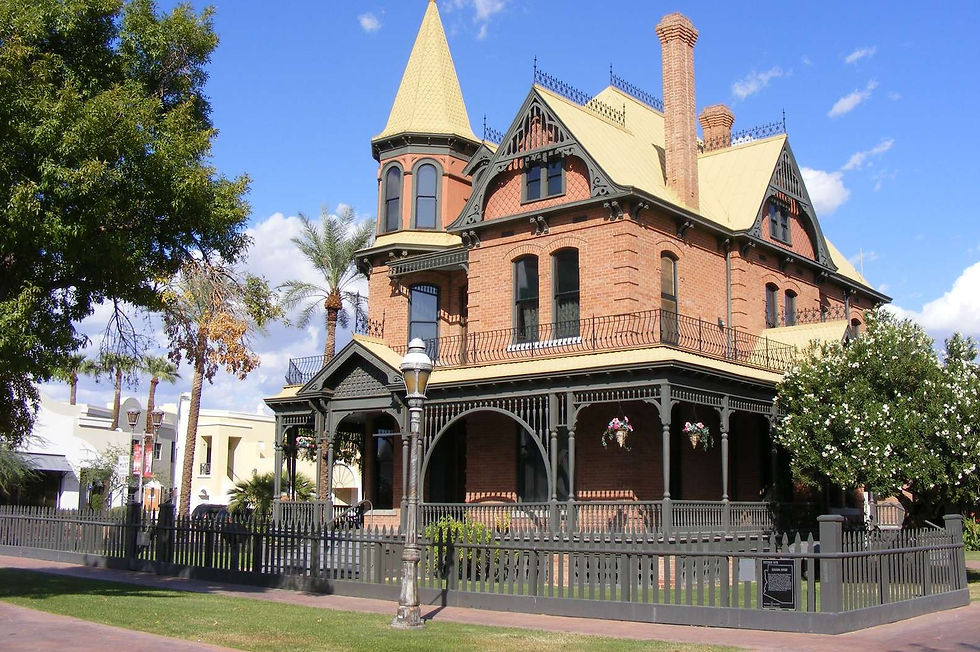
Tartarian?
Here is more on the mysterious Ho Ho Kam people and the “hidden” canals of Phoenix, Arizona.
Phoenix/Egypt
It is estimated that the Hohokam numbered into the 85,000’s at the height of their culture and when they disappeared they ranged between thirty and fifty thousand. Note that the main population centers were in the Phoenix and Mesa area (around 45,000) but more than likely half of them were scattered from Tuscon to Yuma and outlying areas north to the Verde Valley. Would that have been enough manpower required to achieve this task?
Having input the measurements for the two hundred miles of main canals into a cubic yard calculator it comes out to 54,755,600 cubic yards of earth. To put that into perspective the bed of a pick-up truck holds about one cubic yard of dirt or soil. Add to this the fact that they weren’t digging through soil, but instead hard-packed desert floor as well as Caliche clay, using only sticks and flat rocks, and moving the material with baskets and It would seem this canal system quickly approaches a project on par with that of the construction of the great pyramids. Only the Hohokam didn’t have pack animals or even the wheel. Remember the above number doesn’t include the other eight hundred miles of canals.
This being said, these canals were the only large-scale canal systems in North America at this time. How is it that a technology such as this occurred only to these people and was implemented with astonishing efficiently and turnkey perfection? Usually, accomplishments such as this are built up on top of previous lesser innovations over generations and make advances along-side new inventions and technologies. Keep in mind that the Hohokam were farmers; they had no advanced architecture, no metallurgy skills, and no mathematics, much less the higher mathematics necessary for constructing graduated canals. I would like to point out that archaeologists marvel that the canal system is engineered to almost perfection in terms of grade, and flow (three feet of drop per mile) and many of the canals in use today in Phoenix are laid right on top the original Hohokam ones. There is even evidence that they used bottom feeding fish to help keep clean and maintain their canals, exactly like we do today.
An astonishing fact worth mentioning is that the Tohono O’odham Indian tribe, who claim to be direct descendants of the Hohokam practiced a type of floodwater farming called ak-chin farming. Ak-chin is a Piman word describing the alluvial fan at the mouth of an arroyo. This just so happens to be the same method of farming used in ancient Egypt. More noteworthy is the fact that the Hopi practiced, and still continue to practice this same method of farming. There are only two places on earth that man-made structures line up with the three stars in the belt of Orion. The first being the three pyramids at Giza and the second being the three villages on the Hopi reservation at first, second, and third mesa. Although I have not come across a study of the ancient villages of the Hohokam, I wouldn’t be surprised to learn of the same phenomenon here.
Is it possible these canals were already here when the Hohokam wandered upon them? Before reclamation, the Salt River is known to have flooded the Phoenix area regularly. Is it possible they just dug them out and put them to use much the same way Jack Swilling did? If so, there would be no way of knowing as they left no records.
The Naming of Phoenix
Obvious enough our name descends straight from mythical realms itself. In Greek mythology, the Phoenix or Phoenix is a long-lived bird that is cyclically regenerated or reborn. Said to live between 500 and 1400 years the Phoenix is always associated with the sun and obtains new life by burning itself to ashes on a pyre and rising anew to begin another cycle. Coincidentally the Hohokam civilization lasted about 1400 years before it died and Phoenix arose from its ashes.
A Phoenix Bird
The name Phoenix was chosen upon by two men sitting atop an ancient Hohokam platform mound near what is now Sky Harbor Airport. It was Lord Darrell Duppa who stood up and said. “This canal was constructed in an age now forgotten. Prehistoric cities lie in ruins all around you. A great ancient civilization once thrived in this valley. Let the new city arise from its ashes. Let it be called Phoenix.”
https://thephoenixenigma.com/phoenix-egypt/ (Author, Cory Daniel)
More on Phillip Darrell Duppa (according to some sources, an illegitimate son of the Prince of Wales exiled to America to avoid scandal, an interesting character nonetheless) here:
Duppa, who called himself Lord Darrell Duppa, was born in Paris, France, in 1832. He attended Cambridge University and learned the classics and five languages.[1]
He stated that he had been shipwrecked and wandered through South America for some time before he reached North America and Prescott, Arizona, in 1863. He told John G. Bourke that he had been born at Marseilles and that his family served in the diplomatic service.[1]
Having made friends with Jack Swilling and realizing the value of land, drilling, and canal building, he moved to the future site of Phoenix, Arizona, with Swilling in 1867. Duppa built one of the oldest homes in Phoenix in 1870. He later died in Phoenix in 1892, at the age of 59. He is buried at the small Pioneer and Military Memorial Park a few blocks from the state Capitol.
Legacy[edit]
Duppa is recognized as one of the founders of Phoenix, Arizona, with his friend Swilling, and eventually built a ranch north of Phoenix. Phoenix was founded in 1868 and incorporated in 1881, and the name proposed by Duppa came from the story of the mythical Phoenix's rebirth from the ashes. The basis being the rebirth of a city of canals that was rebuilt on the site of the ancient Hohokam canal systems that dated back to about 700-1400 AD.[1]
He is credited for naming nearby Tempe after the Vale of Tempe in Greece.[2]
Duppa founded New River, north of Phoenix, as a stagecoach stop.
Here’s more on the Phoenix canals:
Here’s another interesting video from Michelle Gibson on “A Global Canal System.”
Website: www.piercingtheveilofillusion.com
From Wikipedia (Washington DC)
In the early 1880s, the Washington City Canal was covered over. Originally an expansion of Tiber Creek, the canal connected the Capitol with the Potomac, running along the north side of the Mall where Constitution Avenue is today. However, as the nation transitioned over to railroads for its transport, the canal had become nothing more than a stagnant sewer, and so it was removed.[54]
Just a stinking rotting sewer. What a crying shame . . .
Briefly returning to the subject of fire, here’s a link to Phoenix’s Hall of Flame Museum of Firefighting:
Phoenix boasts not one but two Fire Museums!
Here’s one in Mobile, AL.
Here’s an appropriate musical interlude with a favorite still smoking hot classic by Johnny Cash:
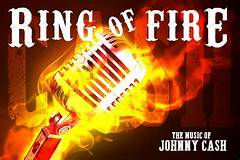
More on The Phoenix:
More recommended readings:
The Anglo-American Establishment, Carroll Quigley ( A Jay Dyer analysis:
Tragedy and Hope, a History of the World in our Time, Carroll Quigley
Imperialism, Diamonds and Power: The Plan of Cecil Rhodes Secret Society for Global Control Steven MacMillan
Experiment in Autobiography, H.G. Wells
New World Order, H.G. Wells
Open conspiracy, H G Wells
Shadow Masters, Daniel Estulin
Tavistock Institute, Daniel Estulin (A Jay Dyer analysis: https://youtu.be/6P_vDcJuG24 )
TAVISTOCK INSTITUTE: An Ongoing Social Engineering Project to Mind Control Humanity
John Rawlings Rees (also known as 'Jack') (1890-1969) was a wartime and civilian psychiatrist and became a brigadier in the British Army. He was a member of the group of key figures at the original Tavistock Clinic (more correctly called the Tavistock Institute of Medical Psychology) and became its medical director from 1934. This group specialised in the new 'dynamic psychologies' of Sigmund Freud and his followers, and in particular the Object relations theory of Ronald Fairbairn and others. Although he became a consultant to the British Army during the second world war, he remained with Tavistock, although this is not made clear on the official Tavistock site. According, to Eric Trist, another key member of the original Tavistock group, who was later to become director of the Tavistock Institute: [1]:
"In 1941 a group of psychiatrists at the Tavistock Clinic saw that the right questions were asked in Parliament in order to secure the means to try new measures. As a result they were asked to join the Directorate of Army Psychiatry, and did so as a group."
After the war, the members of this group went on to found the Tavistock Institute, with funding from the Rockefeller Foundation. Later, many of them would occupy influential posts in world organisations [2], with Rees himself becoming first President and Director of the World Federation for Mental Health which he founded, now a non-governmental organisation with formal consultative status to the United Nations [3] .













Comments